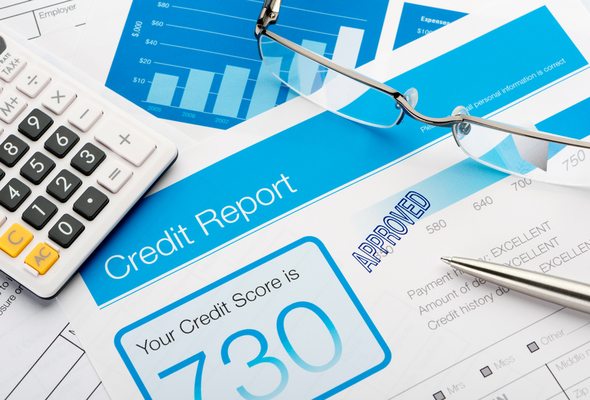
All debts aren’t created equal. Many scoring models, including the FICO® scoring model and the VantageScore, distinguish between two types of debt when calculating your credit score. In other words, they treat revolving credit and installment credit accounts differently. If you have no clue what we’re talking about, here’s a breakdown of what revolving debt is and how it can affect your credit.
Check out our credit card calculator.
Revolving Debt vs. Installment Debt
There are several key differences between revolving debt and installment debt.
Revolving debt usually refers to any money you owe from an account that allows you to borrow against a credit line. Revolving debt often comes with a variable interest rate. And while you have to pay back whatever you borrow, you don’t have to pay a fixed amount every month according to a schedule.
Revolving credit accounts don’t have specific loan terms. That means you can borrow money as often as you need it. That’s not the case with installment credit accounts.
Unlike revolving debt, installment debt has to be paid back in fixed amounts over a set period of time. For example, let’s say you’re buying a $220,000 home. If you take on a $176,000 mortgage with a 30-year term and a 3% fixed interest rate, you could be expected to make a $742 mortgage payment every month for 360 months.
With installment loans, you’ll receive your entire loan amount up front. And while you may end up with an adjustable interest rate, in many cases, your interest rate will be fixed at the beginning of your loan term. Besides mortgage loans, common types of installment loans include student loans, car loans and personal loans.
Types of Revolving Credit Accounts

Credit card debt and debt from a home equity line of credit (HELOC) are two examples of revolving debt. These credit accounts are called revolving accounts because borrowers aren’t obligated to pay off their balances in full every month. Like a revolving door, these accounts allow you to borrow against your credit line over and over again.
HELOCs work like credit card accounts and some require borrowers to make a minimum monthly payment. While you don’t have to pay off your balances immediately, paying off some of what you owe increases your available credit line.
Related Article: What Is a Home Equity Line of Credit?
Unlike credit cards, however, HELOCs limit how long you can draw from your credit line. Once the draw period ends, you’ll have to begin paying back what you owe. If you can’t pay off your debt, your home can be seized. In contrast, many credit cards are unsecured accounts, meaning that there’s no property that can be confiscated if you can’t repay your debt.
Revolving Debt and Your Credit Score
Both revolving and installment debts appear on credit reports. Having a mixture of credit accounts can give your credit score a bit of a boost. After all, 10% of your credit score depends on your credit mix, according to the FICO® scoring model.
Forgetting to make an installment loan, credit card or HELOC payment can have a negative impact on your credit. But revolving credit accounts are typically considered to be riskier because there’s often nothing that a lender can repossess when a borrower defaults.
Credit card accounts in particular can have a big impact on your credit score because they affect your credit utilization ratio. That’s the percentage of your total credit line that you’re using. The amount of debt you owe (which takes your credit utilization ratio into consideration) accounts for 30% of your FICO® credit score.
Since installment loans don’t have credit lines, they don’t affect your credit utilization ratio. Therefore they have less of an impact on your credit score overall. So while paying off your mortgage and your student loans is great, you’ll need to consistently pay off your revolving debt if you want to see your credit improve significantly in a short period of time.
Related Article: How Your Credit Card Utilization Can Affect Your Score
Bottom Line

You’ll end up with revolving debt if you draw money from an open credit line and fail to pay it off right away. Paying your bills on time on a regular basis is one of the most effective ways to raise your credit score. But paying off revolving debt (specifically your credit card debt) can help you build credit more quickly than paying off installment debt.
While HELOCs and credit cards have a lot in common, the impact that HELOCs have on your credit score may vary depending on the credit bureau that’s monitoring your credit report. Though they’re technically revolving credit accounts, they may be treated like installment loans for credit scoring purposes since they must be paid back in regular installments over time.
Photo credit: @iStock.com/kimberrywood, @iStock.com/praetorianphoto, @iStock.com/Courtney Keating